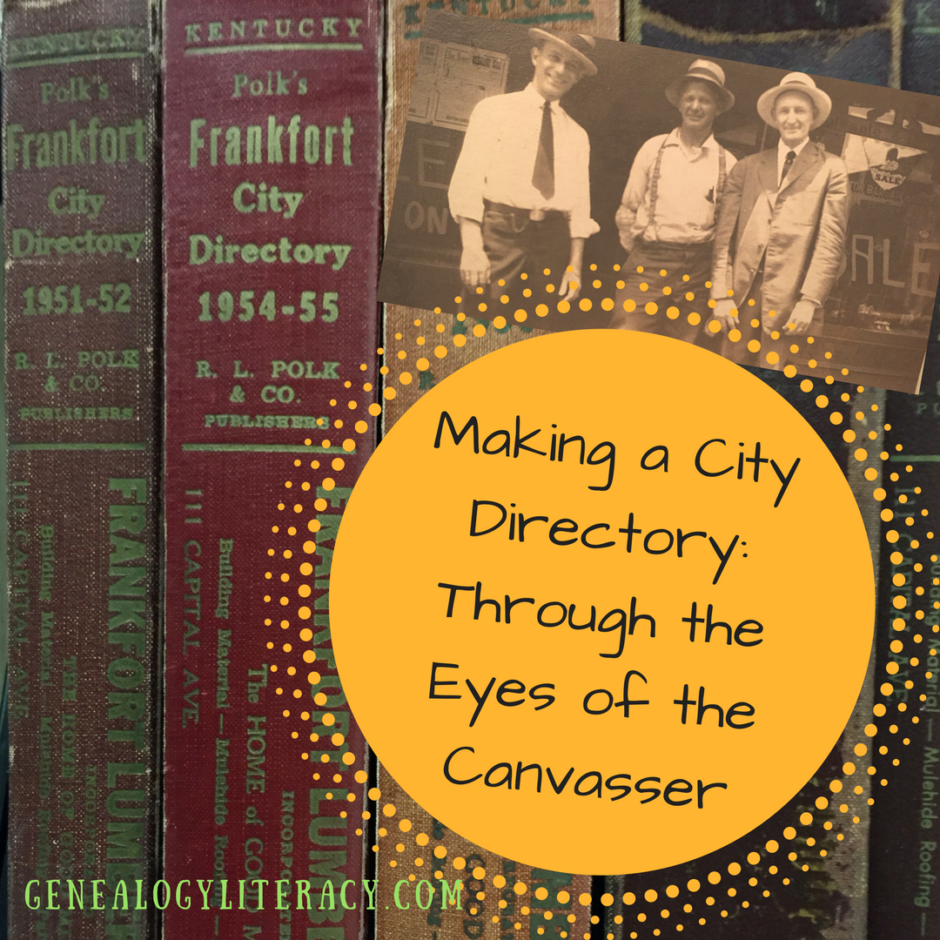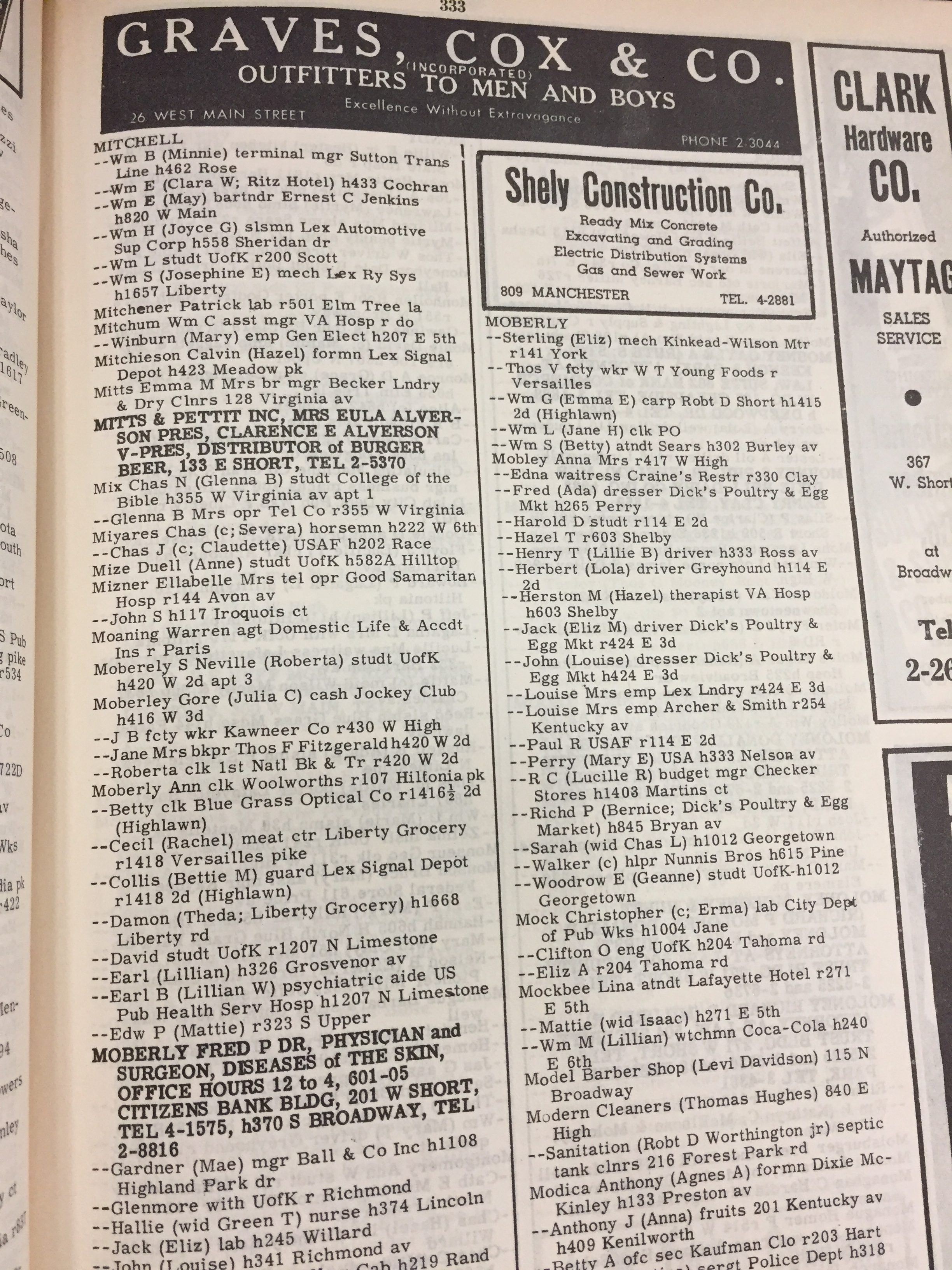 Question: One of our academic researchers was following the life of a single African American woman in the late 19th century. As she turned to City Directories to track residences over the years, she posed a question to us regarding the creation of these directories. She wanted to know who was included in these yearly guides. Obviously, not an entire household, but not always the head of household either. Was everyone included in a City Directory or did you have to pay to be listed? After all, these were valuable resources for advertising your business during that time.
Question: One of our academic researchers was following the life of a single African American woman in the late 19th century. As she turned to City Directories to track residences over the years, she posed a question to us regarding the creation of these directories. She wanted to know who was included in these yearly guides. Obviously, not an entire household, but not always the head of household either. Was everyone included in a City Directory or did you have to pay to be listed? After all, these were valuable resources for advertising your business during that time.
What a great question! As many as I had used over the years, I really hadn’t closely examined the creation of these resources. The impression I had of City Directories came from the gaudy fonts and large advertisements speckled throughout each volume. I suspected that inclusion was fee based, but I didn’t know that for sure. I was just happy that they listed some of my ancestors (sometimes with spouse), their occupations, and addresses over the years. Little did I know about the process of gathering these names.
 As I started digging for more information, I noted that most of our directories, regardless of year were produced by outside companies – not city, state, or federal government entities – nothing official – very much like today’s phone books.
As I started digging for more information, I noted that most of our directories, regardless of year were produced by outside companies – not city, state, or federal government entities – nothing official – very much like today’s phone books.
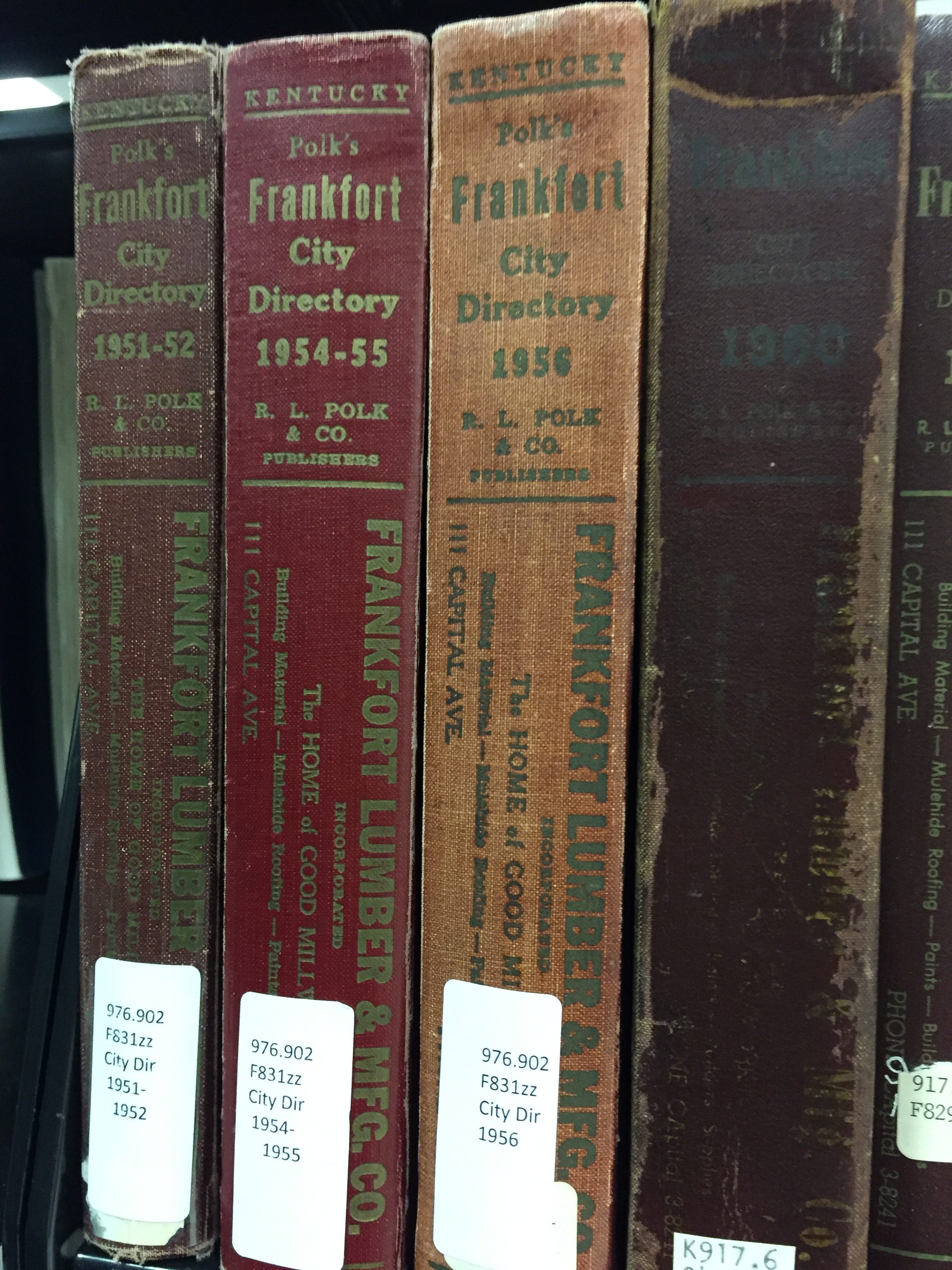 Throughout the many decades of their publication, advertisements can be found each year in the local newspapers, announcing the availability of a new City Directory – obviously offering said directory for sale, or better yet, offering subscriptions to the yearly updates. The popularity of these directories also drove sales for large advertisements within them – a pretty lucrative endeavor for the publishers!
Throughout the many decades of their publication, advertisements can be found each year in the local newspapers, announcing the availability of a new City Directory – obviously offering said directory for sale, or better yet, offering subscriptions to the yearly updates. The popularity of these directories also drove sales for large advertisements within them – a pretty lucrative endeavor for the publishers!
But then I stumbled upon an amazing article published in the Louisville Courier Journal in 1888: Looking for Names – The Experience of a Canvasser for the City Directory.
This long article detailed the yearly process: from hiring the canvassers, to the questions they ask, to the people they seek for information…despite the horrible prejudices exhibited in this article (many racially disturbing descriptions) we can learn a lot from the description of the canvassing process.
From this article we learn:
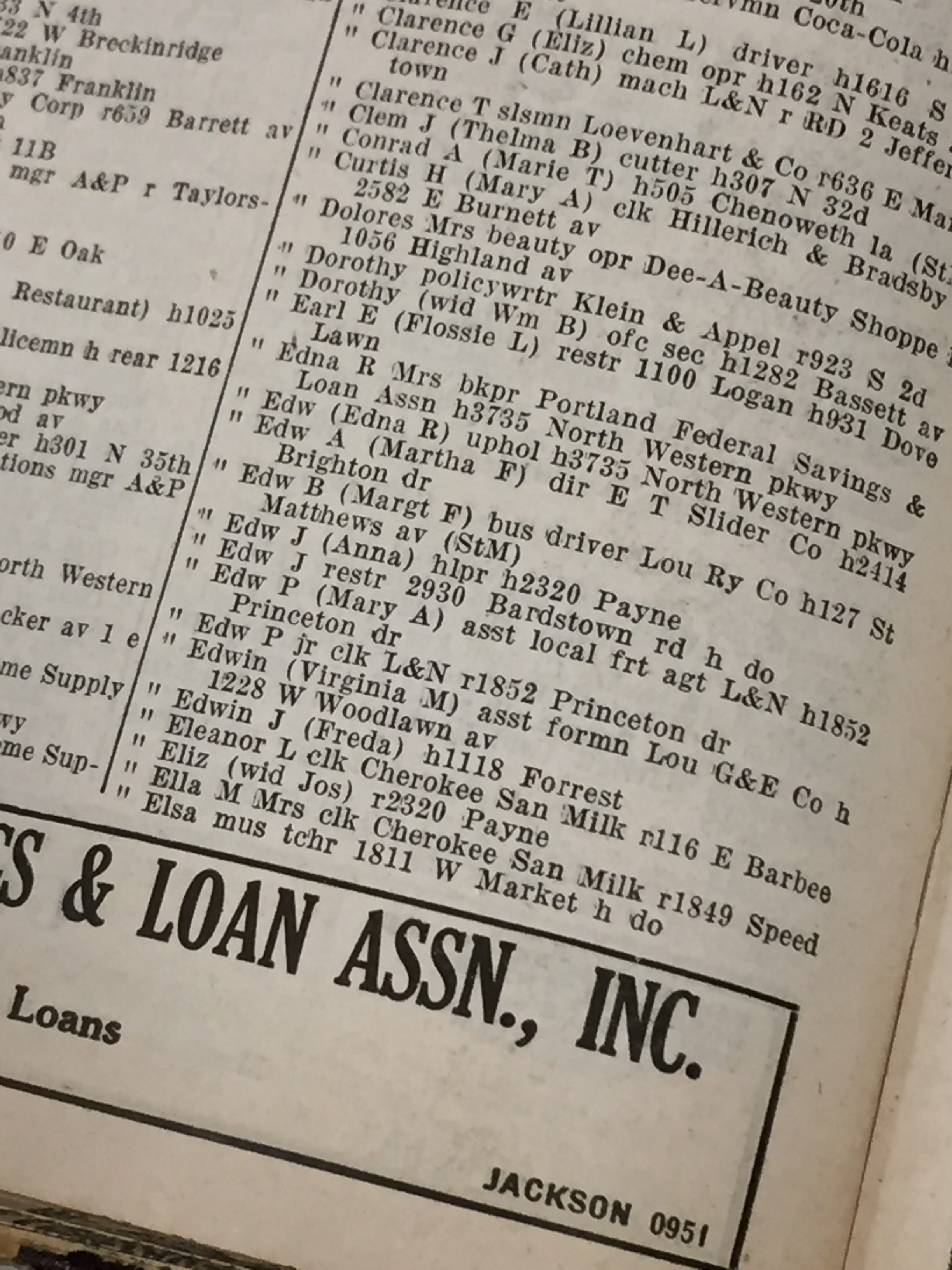 Canvassers were hired to begin work in the fall of each year.
Canvassers were hired to begin work in the fall of each year.- Each large city required a canvassing force that was 25-30 men strong – a hard choice as the applicant numbers ran into the 250-300 range!
- Obviously, the ideal candidates possessed advanced reading and writing skills (according to the article).
- Instead of a large book of sheets like the census enumerator might have carried, the City Directory canvassers carried around strips of paper to gather the information on each person employed in any type of occupation. One strip of paper for each person.
- Everyone working an occupation was included in the City Directory – as long as they could be found and counted by a Canvasser. All occupations were sought, both legal and illegal, according to the article (“opium joints” and “gambling rooms”) – how they labeled illegal occupations is beyond me – but it makes me want to take a closer look at the types of occupations listed.
- Money was NOT a part of the inclusion process, unless a business owner decided to purchase a prominent advertisement (or large/bold font) in the Directory.
- Canvassing took place from around 7am to 6pm.
- Much like the census taking process, the city was divided into districts and assigned to individual Canvassers.
- If a Canvasser was good at his job, he might be employed throughout the year to assist with the production of the Directory, through the publishing process – but for the most part, canvassing work was grueling with low pay, resulting in heavy turnover each year.
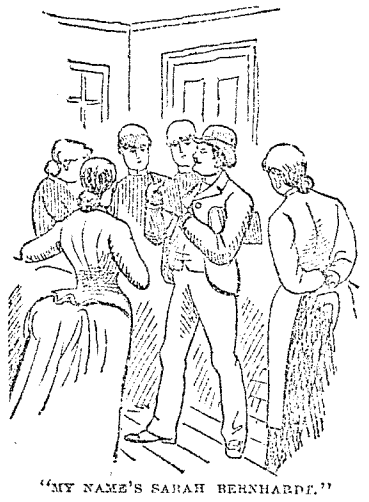 Sometimes, our ancestors did not want to be recorded – as it is noted in this article, those who were running from creditors, or the law, or involved in illegal activities might give an alias – just our research luck!
Sometimes, our ancestors did not want to be recorded – as it is noted in this article, those who were running from creditors, or the law, or involved in illegal activities might give an alias – just our research luck!- Confusion was rampant throughout the canvassing process – heavy accents and ethnically diverse names meant misspelled or phonetically butchered entries. As large cities were immigration hubs, many of our immigrant ancestors might have been overlooked by the Canvasser – or they may be there – just be sure to look for any possible pronunciation.
- The African American community was represented in an anecdotal story that demonstrates the precarious relationship between anyone of authority and this population group. The Canvasser complained that they were perceived as government officials and, therefore, false or reverse names were given with each subsequent year. The example given was “Andrew Jackson” given one year and “Jackson Andrew” given the next year. It was even noted that they suspected it was a list being compiled for police use.
- The Canvassers also complained that many women were not included in the Directory because many believed women performing any occupation was a sign of low class status – resulting in a refusal to admit any occupation at all – regardless of the report of neighbors.
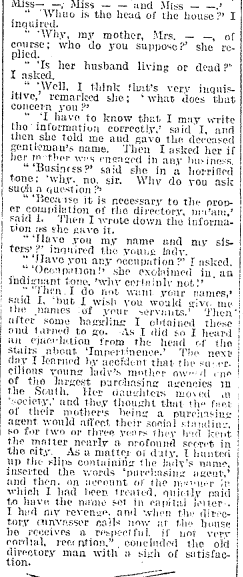 One of my favorite stories from this article came from a household of just women: a single mother/widow – who happened to be a business owner. The household was wealthy enough to employ servants – thereby creating a brief period of confusion. The woman’s young adult daughters were of no occupation, and spent their days at home attended by the servants. The Canvasser arrived and asked about the head of the household and her occupation/business, and then asked about other residents in the home – inquiring about their profession. After first denying their mother’s occupation, the young women thought the City Directory was something of importance at first, and pressed the man to include their names. When they realized that he kept focusing on occupations they became even more offended, declaring that they were NOT of any occupation! The Canvasser then focused on their servants to add to the Directory – which offended the girls even more – apparently, their mother was a large purchaser in the southern region, but the fact had been hidden from their neighbors and social circle as this was considered to be a low class activity. Due to his experience that day, the Canvasser changed his entry for the mother to list “purchasing agent” as a matter of revenge.
One of my favorite stories from this article came from a household of just women: a single mother/widow – who happened to be a business owner. The household was wealthy enough to employ servants – thereby creating a brief period of confusion. The woman’s young adult daughters were of no occupation, and spent their days at home attended by the servants. The Canvasser arrived and asked about the head of the household and her occupation/business, and then asked about other residents in the home – inquiring about their profession. After first denying their mother’s occupation, the young women thought the City Directory was something of importance at first, and pressed the man to include their names. When they realized that he kept focusing on occupations they became even more offended, declaring that they were NOT of any occupation! The Canvasser then focused on their servants to add to the Directory – which offended the girls even more – apparently, their mother was a large purchaser in the southern region, but the fact had been hidden from their neighbors and social circle as this was considered to be a low class activity. Due to his experience that day, the Canvasser changed his entry for the mother to list “purchasing agent” as a matter of revenge.
After reading this article and its portrayal of the difficulties of canvassing, I can safely say, count yourself fortunate if your ancestor was listed in a City Directory. But also, much like the tax lists, it’s important to look through many consistent years of Directories – simply because our ancestors were mobile, and maybe away visiting with family to miss the Canvasser – present five years, missing for two, and then back again. Plus, note if your ancestor was a day laborer, or first generation immigrant, or one of the many disenfranchised classes of the time. For all of these groups, they may have been excluded from the City Directories, or merely listed with altered names – just because the Directories are typed, doesn’t mean the errors are any less extreme than the errors we are used to seeing in the census records. Understanding the context of your family’s place in history, and their social/racial/cultural challenges can help with your research and analysis strategies!
Happy researching! Cheri Daniels, MSLS Your Genealogy Librarian

